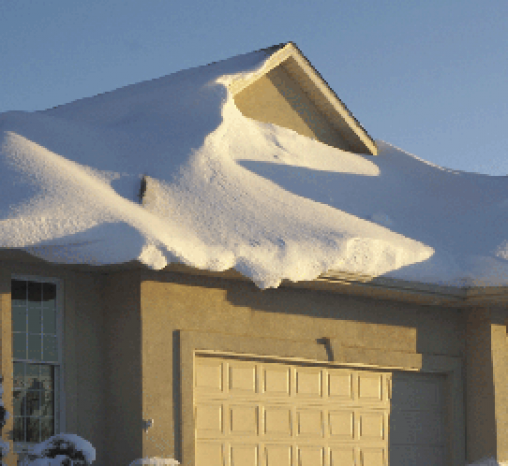Minimum ground snow loads clarified

The impact of heavy snowfalls on buildings at low altitudes in the central and southern South Island led to us setting a minimum ground snow load in the Verification Methods for Structure (B1). The following technical guidance on how this minimum ground snow load should be applied is for engineers and designers.
This information was confirmed as current in February 2016. It originally appeared in Codewords newsletters prior to January 2014.
The Verification Method states:
For Regions N4 and N5, the minimum value of sg for the Ultimate Limit State only must be taken as 0.9kPa.
Note that the minimum value specified in the Verification Method is for strength (an Ultimate Limit State value only). The Standard’s normal provisions are intended to be used for Serviceability Limit State load cases.
How to determine the ground snow load in the sub-alpine regions
For the Ultimate Strength Limit State, the value of sg would be calculated from Clause 5.4.3 of AS/NZS 1170.3 using a probability factor of 1.25. This is the kp value corresponding to an APE value of 1/150. Note this is for Importance Level 2 buildings. For other building importance levels the APE and the kp factor will be different.
For the Serviceability Limit State, the value of sg would be calculated from Clause 5.4.3 of AS/NZS 1170.3 using a probability factor of 0.84. This is the kp value corresponding to an APE value of 1/25.*
For the Serviceability Limit State the value of sg to be used is the calculated value – no minimum would apply.
Note that Table 3.3 of AS/NZS 1170.0 requires an APE value of 1/25 for the Serviceability Limit State. Table 5.1 of AS/NZS 1170.0 does not have a kp value for an APE of 1/25 so the kp value is therefore determined by interpolation between the values for an APE of 1/20 and 1/50.
Background
The minimum strength value of 0.9kPa was introduced after considering snow data in regions N4 and N5. This included data from the snow storm of June 2006 where a snow load considerably greater than the design snow load was measured.
The change to the Verification Method was made because it appeared that AS/NZS 1170.3 significantly underestimated the snow loads at low altitudes in these regions.
The investigation revealed that little relevant data existed. As a result, we commissioned NIWA to gather data from extreme snow events in regions N4 and N5. Once sufficient data has been collected, it is intended that the current Verification Method provision will be reviewed.